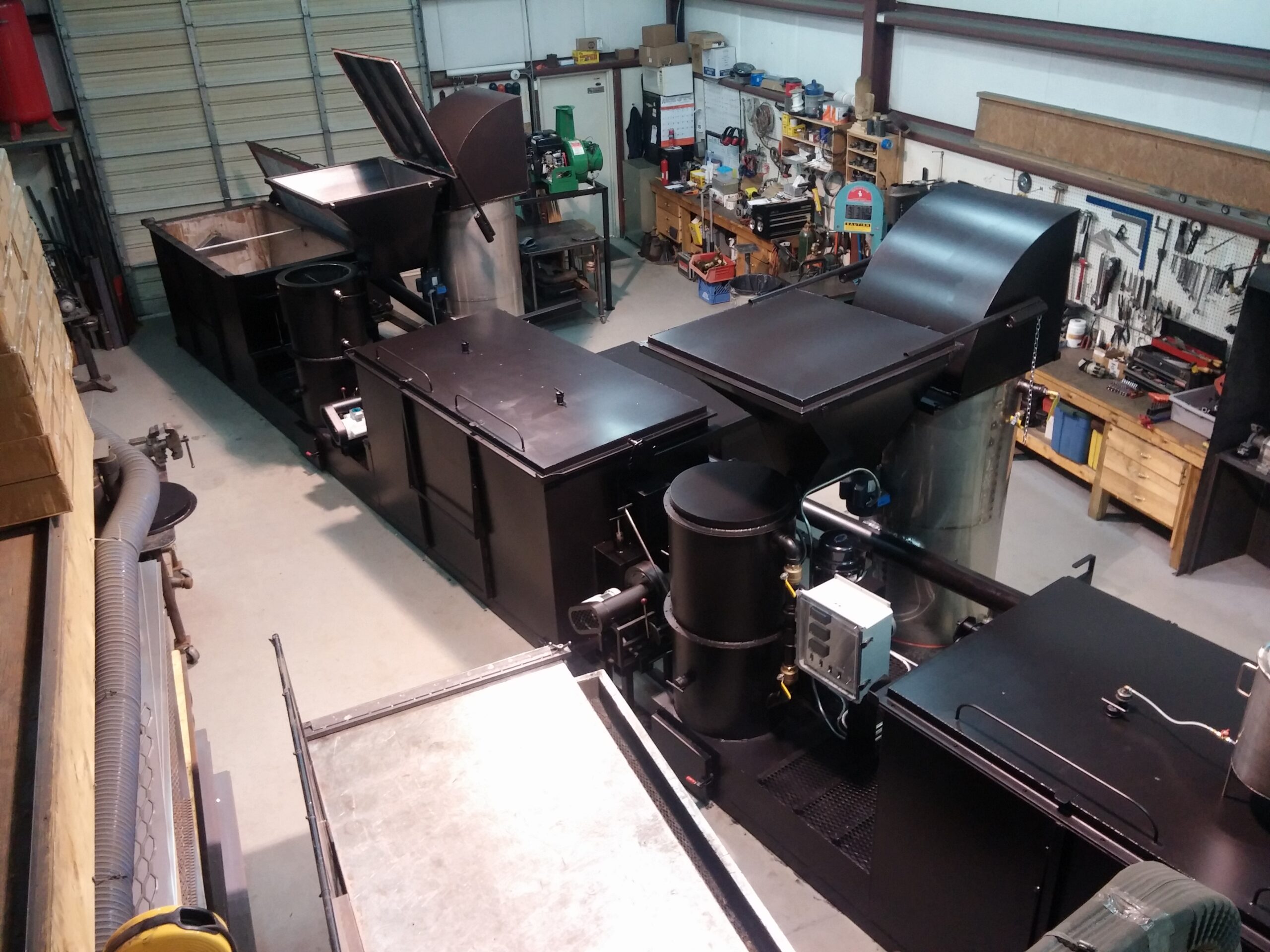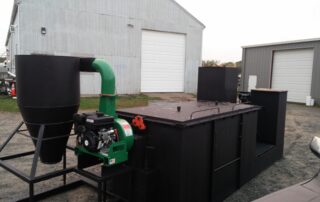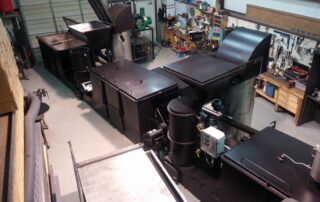Our Technology
As real pyrolysis, charification is a process that thermally decomposes organic materials in the absence of oxygen, producing biochar, bio-oil, wood vinegars, and syngas. This technology is pivotal to the transformation agricultural residues and other organic waste into valuable products that enhance soil health, provide renewable energy, and contribute to environmental sustainability and biodiversity.
Key Components of Pyrolysis Technology:
Benefits of Pyrolysis Technology:
Earthworks utilizes a true pyrolysis process to make our biochar. We call it ‘Charification’. Using pyrolysis is preferable to using gasification because by burning the biomass gasification destroys the honeycomb structure of biochar. The reason to maintain the microscopic honeycomb structure is that biochar’s nooks and crannies act as a “house” for symbiotically beneficial microbes, bacteria, and enables better storage of nutrients. If this house structure is weakened or destroyed during the gasification process, then any biochar produced will be less effective.
Pyrolysis is also a much cleaner, more efficient method of manufacturing biochar. Gasification prioritizes energy generation with any biochar/carbon black “leftovers” being an afterthought. Pyrolysis processes vary, but we’ve designed our machine to make the best biochar and wood vinegars first, with energy generation being an ancillary benefit.
Earthworks and New England Biochar (NEB) are collaborating on the development of a unique continuous feed pyrolysis system, designed for greater throughput, cost efficiency, ease of operation, and serviceability.
This new system is pivotal to scaling up gigaton level carbon capturing solutions. Our teams at Earthworks and NEB are dedicated to enabling more companies and cooperatives to adopt pyrolysis systems to enhance their agricultural and industrial processes.
Purchase Pyrolysis System
To ensure the optimal fit of our machines to your needs, a site evaluation is required before providing a price quote. Please fill out the form below. We’ll get back to you shortly.
Earthworks is offering a unique opportunity by donating a pyrolysis machine to a suitable university or NGO.
Engineering students, research fellows and professors will be able to assemble and test our continuous feed pyrolysis unit, the CR2. The selected organization will receive the machine for operation, teaching, and testing purposes. All biochar and wood vinegar sold and any carbon credits generated, will be retained by the successful applicant. Our initiative aims to address the shortage of professionals capable of operating pyrolysis equipment. Earthworks has previously collaborated with UC Riverside, Guelph University, the CDFA, and others, fostering research on biochar and wood vinegar and the aiding the development of new applications and intellectual property.










